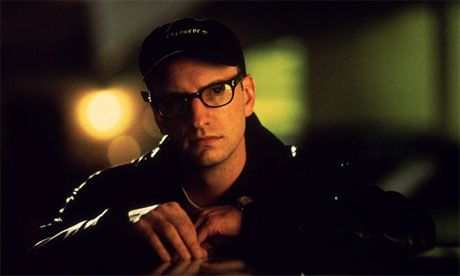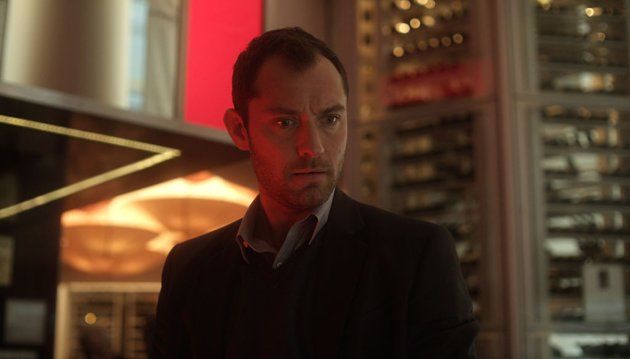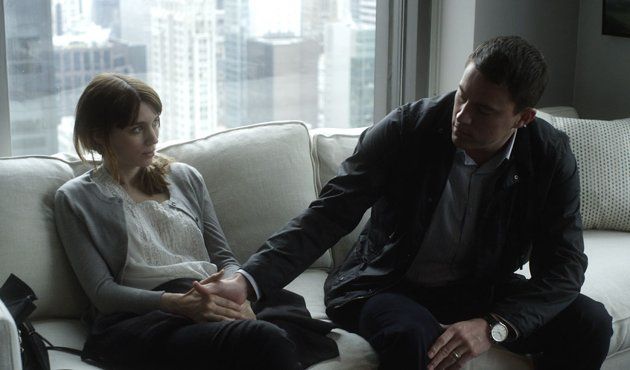Last week, the Film Society of Lincoln Center hosted an advance screening of Steven Soderbergh’s highly anticipated final feature Side Effects, followed by a rare hour-long Q&A with the director himself, along with writer Scott Z. Burns and stars Rooney Mara, Jude Law and Vinessa Shaw.
An adrenaline punch of a film, Side Effects follows Emily Taylor (Mara), a depressed woman who seeks the help of psychiatrist Dr. Jonathan Banks (Law) only to find her life turned upside down by an experimental drug he prescribes to her. As the psychological thriller unravels, the lines between reality, morality and accountability are blurred.
The evening’s conversation hinged upon the film’s “zeitgeisty” issues, its ‘80s “matinee movie” influences, the “different kind of acting” required for Mara and Law’s roles, why Soderbergh chose the project (and why he’s making it his last), and even a film school-esque tutorial from the director detailing how he fashioned a key shot.
Why Side Effects isn’t simply a procedural indicting Big Pharma
“I didn't want to see that, is really what it comes down to,” Soderbergh explained. “What I loved about what Scott did was that that issue was just a Trojan horse to hide a thriller inside of, and I feel like -- again -- as a movie that you stand in line and pay to see, that I didn't want to see a serious movie about Big Pharma. I really didn't, because I feel like I can read about that, and it's all over the news, it's everywhere. That may be a result of the fact that I'm in the twilight of my career. Because I honestly wanted to make something fun – I really did. I wanted to make something that I thought was fun that was connected to movies that I saw when I was growing up that I thought were fun.”
What attracted Soderbergh to Burns’ script
“I knew what Scott was up to, and I really love the idea that he's sort of taken a sort of social issue - a very zeitgeisty issue - and sort of used it as a trojan horse to kind of hide a thriller inside of,” Soderbergh said. “This was a kind of movie that used to be made a lot, and for some reason -- I don't know if it got priced out of existence or what -- but in the ‘80s, which I've talked about as being probably the worst decade in American film, with the exception of some great independent filmmakers who were starting to emerge, and these kind of fun thrillers. Like Fatal Attraction or Jagged Edge that were just kind of great matinee movies. And I was really excited about the idea of doing an updated version of that. I started my career making a movie about someone who was seeing a psychiatrist. And in 1989 the idea that Andie MacDowell would've been medicated didn't even occur to me. And so here we are twenty plus years later and the idea that she wouldn't be medicated wouldn’t occur to anyone.”
Mara and Law’s “different kind of acting”
Mara divulged some spoiler-filled secrets regarding her role, but summed up everything by saying, “It was really hard figuring out how I was going to do it, because what I always try and do is I always try and find the truth in whatever it is. … It was hard -- it's a different kind of acting.”
Soderbergh said he and Law discussed his character at length. “What we talked about was here's a guy…if everybody else is moving at 55 miles an hour, he feels like he's moving at 65,” he explained. “Because we knew where it was going, and we wanted to see that all collapse. …We didn't want him to be a jerk, we wanted that sense of, ‘I got it all figured out, I'm on this -- there's nothing that you can throw at me.’”
For Law, research was the key to his performance. “I think one of the things that I found really intriguing in both the positive and slightly sinister way -- in investigating psychiatry and how it's applied nowadays -- was the absolute belief that they have in the medicine,” he saod. “They have to believe, because they see it working. I studied with a lot of psychiatrists who you could really see them turning people's lives around. And so - like Steven said - I think this is just for him a new riddle … it's a Sudoku. So when he can't work around it, it drives him nuts.” He went on to discuss his methods for maintaining the character’s arc, saying, “When you've got a really terrific script that has real subtleties to it, sometimes you really just have to play the script in the moment. Obviously, knowing you're going to shoot out of order, I had this weird kind of color coding I tried to do…that allowed me to sort of know at what point he was moving … and that helped me a great deal.”
Mara joked that Burns “made me a little number chart. Like a scale of one to five -- five being like very depressed.” However, she promptly trashed it, because, “I always believe whatever's happening [in the script] is really happening.” Law built upon her sentiment, divulging, “The best way to act is listening. It has nothing to do with what you're all doing, you've got to listen and watch what the other person is doing and somehow weirdly what they're doing is mirrored through you.”
Burns’ personal relationship with the subject
“I've had people in my family who have suffered depression -- most people probably have. ... Both my parents are psychologists,” Burns said. “I think that in the research that I did … and talking to other therapists … 4we talked about how we've declared war on sadness in this society - and there's a difference between being sad, which may be a very well-reasoned response to something going on in your life, and a persistent debilitating sadness, which is a thing called depression. And when the two get conflated, you do have to wonder, ‘Are we conflating them because it's an opportunity to sell more drugs?’ So there's a point where you have to ask yourself, ‘Are these companies the arsonist and the fireman?’ I find it kind of fascinating when you combine it with the fact that - whether it's this culture in this country or it's just human beings - we're all looking for a shortcut. And they play on that. I play on it!”
Fashioning a shot: the Soderbergh tutorial
The director turned the Q&A into a fascinating film-school lecture when he launched into a discussion about the look of Side Effects. “I feel like you should have a reason for every shot -- you should have a reason for every cut, and if you don't then you're kind of … I don't think you've broken a contract with the audience but you've broken a contract with me,” he explained, to laughter from the crowd. “The point is, everything matters. Everything matters! … And what I loved about this piece of material was these incredible opportunities to just take it all down to the marrow and have scenes in which I can sit there as a director and go, ‘How few shots do I need, ultimately, to make this scene work?’ More often than not, it was two. I'm not afraid to have two people sit in a room and have a conversation and have it be two shots -- if it's a good scene. I don't feel insecure about that. But that doesn't mean it has to be boring, that doesn't mean it can't be stylish.”
Soderbergh delved deeper into his process, using the first therapy session between Mara and Law. “The first two compositions are sort of odd,” he said. “We're above you, there's more negative space than you would normally have in a shot -- there's more headroom than you would normally have in a shot -- there's something not quite symmetrical about the two shots, as the scene begins. Then she goes into her monologue about meeting Channing and we do a diagonal drop in which the camera is still the same distance away from her, but when it lands, we're in a much more typical, symmetrical shot of her - and when I cut around to Jude, I'm matching that and everything now seems to be back normal in terms of the grammar of what we're used to looking at when we watch a movie.”
He summed it up. deadpanning, “So that -- to me -- that's what you're supposed to do, as a director. And when I see something in which that has obviously never occurred to anyone, then I just go, ‘Well - what have you been looking at?’ I've gotten there because I've watched a lot of good movies that other people have made. I'm standing on the shoulders of anybody who's ever made a good movie. And I'm stealing from them.”
On Soderbergh’s impending retirement
After his impassioned monologue, Shaw came right out and asked what was on the entire audience’s mind: Why is Soderbergh retiring from directing? “Because I don't ever want to be in a situation where that's the solve again,” he said. “I can't use that again. I used it there, I can't use it again. And that was the last good idea I ever had.”
Working with Thomas Newman on the score
Newman’s score is one of the film’s stand-out elements, and it’s his third collaboration with Soderbergh. The director discussed the interesting circumstances of Newman’s collaboration on Side Effects, saying, “I went to him early, because I felt that he would understand the approach that we wanted to take. The good news was, here's your worst nightmare as a composer: that when somebody turns over a temp score, it's got all of your music in it. And that wasn't the case here - and so he was so happy when he got the score. I said to him, ‘I want it to have the quality of, like, a fable, somehow.’ We talked about Rosemary's Baby a lot. He didn't have a lot of time, because what happened was we shot this movie in April and May, we got it cut together very quickly, and then I went off and did the Liberace film and we sort of had this on the shelf - we were working on it, but Tommy was doing the Bond film and wasn't going to be available to me until November. And then he came to it and it all happened very quickly. As a director, it's the post-production equivalent of your relationship with the cinematographer. If it's going great, then it's all roses and sunshine. And if it's not, then people get killed. And so the first thing he played me was the opening cue…and I knew immediately we were gonna be fine.”
Side Effects opens Friday.




